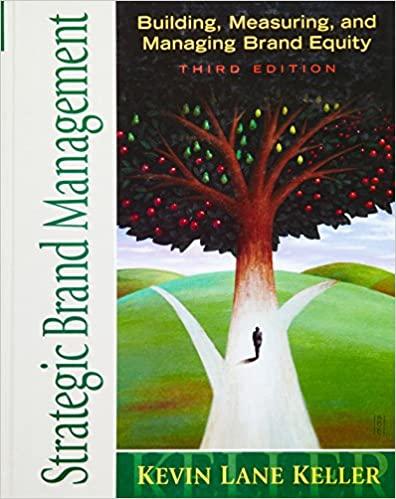Answered step by step
Verified Expert Solution
Question
1 Approved Answer
Final Examination - Spring 2024 Operations Management, William J Stevenson 14e Instructions: Please mark T for true and F for false. Only return the answer
Final Examination - Spring 2024 Operations Management, William J Stevenson 14e
Instructions: Please mark T for true and F for false. Only return the answer sheet with responses from the textbook only
- Operations Management is the sequence of organizations, their facilities, functions and activities.
- Process selection has operational and supply chain implications.
- Operations managers are responsible for assessing consumer wants and needs and selling organization's goods and services.
- Models are used to help make good business decisions.
- Assembly lines use the concept of division of labor to divide the production operation into a series of small tasks.
- Forecasting allows Wegman to plan to workforce levels, purchase quantities, inventory levels, and capacity.
- The four primary functions in operations management is labor, skills, productivity and output.
- The industrial revolution began in the 1800's in Africa and spread to England.
- Seventy percent (70%) of jobs in the United States account for service jobs and that figure continues to rise.
- Lean Production involves producing a high variety of customized goods, low volume output with skilled workers, and utilizing general purpose equipment.
- Matching supply and demand is an important objective for every business organization.
- U.S. firms are having a difficult time competing with foreign firms in both the domestic and international markets.
- The Balanced Scorecard is a top-up management system.
- Organizations use strategy to achieve its goals.
- Capacity planning refers to the activities of the firm in determining the capacity of a plant or a facility in terms of equipment, machines, space, workers, and processes.
- Forecasts is generally wrong due to the use of an incorrect model to forecast, random variation, or unforeseen events.
- A main advantage of standardization is the less variety of parts to deal with.
- The term "life cycle" describes the time it takes to make a product.
- A good facility layout should lead to smooth flow of material, reduction of inventories, and effective utilization of space.
- Specialization describes jobs that have a very large scope.
- Time-based systems compensate employees according to the amount of output they produce.
- Output-based (incentive) systems compensate employees for the time the employee has worked.
- A basic scheduling tool that is used most useful in low volume systems is the Gantt Chart.
- When we use input/output controls, we are referring to monitoring the productivity determined by the ratio of output/input.
- To determine how much time people are waiting, multiply the wait cost per minute.
Step by Step Solution
There are 3 Steps involved in it
Step: 1

Get Instant Access to Expert-Tailored Solutions
See step-by-step solutions with expert insights and AI powered tools for academic success
Step: 2

Step: 3

Ace Your Homework with AI
Get the answers you need in no time with our AI-driven, step-by-step assistance
Get Started


